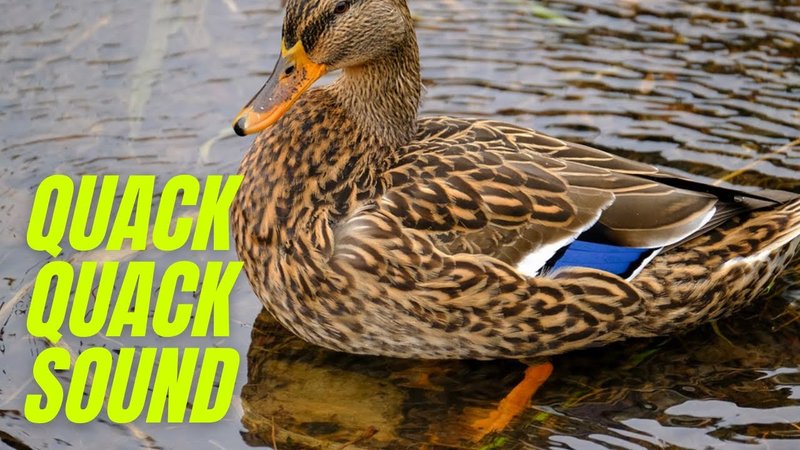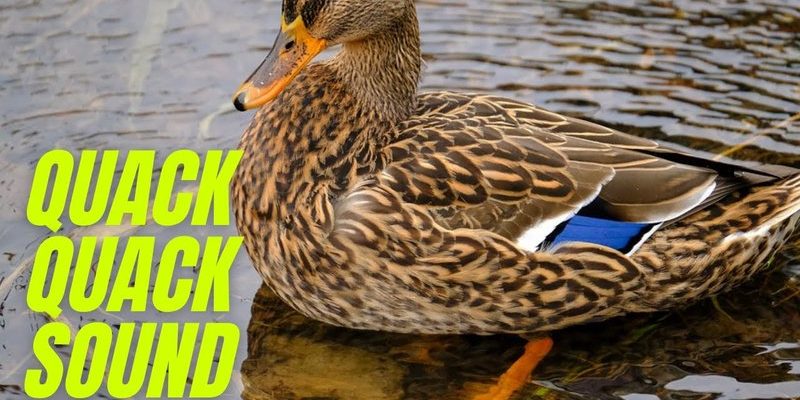
Imagine having a conversation with a friend using different tones and emotions. Sometimes you’re excited, and sometimes you’re warning them about something. Ducks do the same thing, but they’ve got their own vocabulary of quacks, whistles, and grunts. If you’ve ever been curious about what these sounds really mean or how to recognize them, you’re in the right place. Let’s dive into the fascinating world of duck vocalizations!
Understanding the Different Types of Duck Sounds
Ducks are pretty expressive, and their vocalizations vary widely between species. Each sound carries a specific meaning. Here’s a breakdown of some common duck calls you might hear:
- Quacks: The classic duck sound! This is primarily what female ducks (hens) use. It’s a loud and raspy quack, often signaling alarm or drawing attention.
- Whistles: Male ducks, particularly species like the Wood Duck, often produce softer, melodic whistles. These sounds might indicate contentment or be part of a courtship display.
- Grunts and Hisses: These low sounds usually mean a duck is annoyed or feels threatened. If you hear a duck grunt, it’s wise to give them some space!
Understanding these sounds can help you appreciate the ducks’ social interactions. It’s like witnessing a conversation where each voice plays an essential role. So, next time you’re around ducks, listen closely; you might find it quite entertaining!
The Meaning Behind Quacking
Quacking is often the most recognized sound, especially among domesticated ducks like the Pekin. For female ducks, this vocalization serves several key purposes.
First, it can be a form of communication with ducklings. You might notice mother ducks quacking to guide their young ones or call them over for a snack. This way, they ensure their ducklings stay close and safe.
Second, a quack can signal alarm. If a duck feels threatened by predators, you’ll hear a series of rapid quacks that alert other ducks. In this case, it’s like setting off an alarm bell in a crowded room. Everyone needs to pay attention!
Lastly, quacking can even be a mating call during the breeding season. Male ducks listen closely to these sounds, trying to determine which females are interested. It’s a bit like putting out an invitation to the best party in town!
Other Vocalizations: Whistles and Grunts
While quacking might steal the spotlight, whistles and grunts play crucial roles in duck communication, too.
Whistles often come from male ducks, especially during courtship. These sounds are softer and more melodic than quacking, indicating a relaxed or playful mood. When you hear a male duck whistling, it’s likely trying to impress a potential mate. Imagine a charming friend trying to win your attention; that’s the vibe!
Grunts and hisses, on the other hand, are more about setting boundaries. If a duck feels threatened or annoyed, it may let out a low grunt or hiss to warn nearby ducks to back off. Think of it as the equivalent of someone saying, “Hey, back off!” in human conversation. It’s a warning that shouldn’t be ignored.
Why Duck Vocalizations Matter to Their Behavior
Duck vocalizations aren’t just for show. They have real implications for their behavior and social structures. For example, the differences in vocal sounds can help other ducks identify their relatives or even their specific species. This recognition is crucial for breeding purposes and social interactions.
Additionally, vocalizations play a significant role in territory establishment. If a male duck feels his area is being encroached upon, he’ll use loud quacks and other sounds to assert dominance. It’s like a verbal warning: “This is my turf!” Such behavior is vital for maintaining social order within flocks.
In a more general sense, understanding these sounds can help birdwatchers and nature lovers connect more deeply with these creatures. Knowing what a duck’s call means can enhance your experience and make you feel more in tune with nature.
How Ducks Use Sounds in Different Contexts
Ducks are smart and adaptable creatures, so their vocalizations change depending on the context. For instance, a duck might quack differently when it’s alone compared to when it’s in a group.
When with others, sounds can become a chorus, helping to strengthen the bond within the flock. Ducks often engage in softer sounds among close companions—this is how they show affection and contentment. It’s like friends whispering secrets to each other, creating a sense of intimacy.
On the flip side, when they feel threatened, the quacking can become frantic and loud. Ducks have an incredible ability to gauge their environment and react accordingly. Their vocalizations serve as an effective way to share important information with one another.
Listening to Ducks in Their Natural Habitat
If you’re keen on understanding duck vocalizations, spending time in their natural habitat is the best way to start. Parks, wetlands, and ponds are great spots to observe and listen.
When you find a group of ducks, sit quietly and pay attention to the different sounds. You might notice how their vocalizations change depending on their interactions. Watch their body language, too! A relaxed duck may have soft whistles, while an agitated one might be louder and more aggressive.
Consider bringing a notebook along. Jot down the various sounds you hear and what you think they mean. It can be a fun personal project and a way to deepen your connection with nature!
Ducks have a rich and varied language that can be both entertaining and informative. From quacking to whistling and even grunting, each sound carries meaning and emotion. By taking the time to listen and learn, you can appreciate these quirky creatures even more.
Next time you’re near a pond or park, try tuning into your feathered friends’ conversations. You might find yourself captivated by the depth and complexity of duck vocalizations. It’s a reminder that nature has its own fascinating ways of communicating—if we’re just willing to listen!

